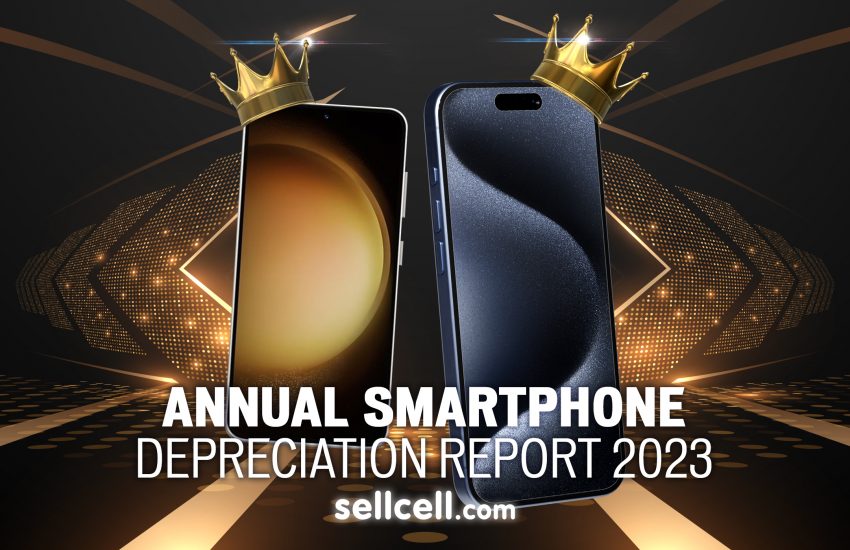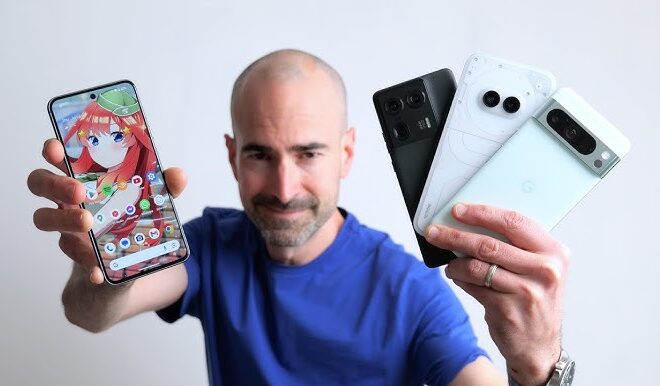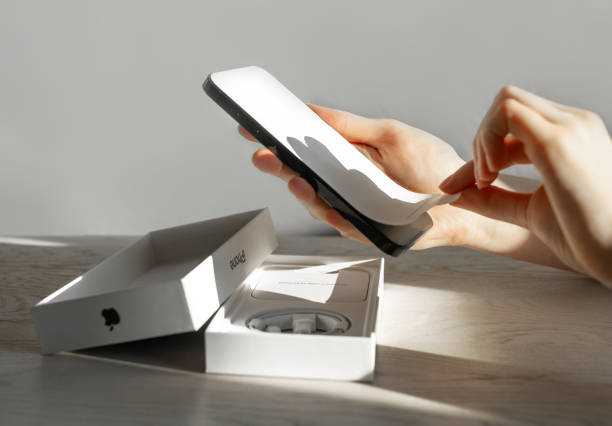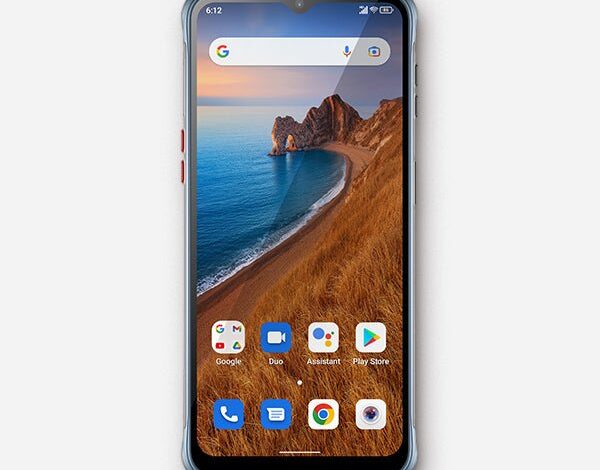
The Android Resale Value Conundrum: A Deep Dive into Depreciation and Long-Term Worth
The moment you unbox a new flagship Android phone is a technological thrill. The vibrant, high-refresh-rate display, the sophisticated camera array promising professional-grade photos, and the sheer processing power all represent the pinnacle of mobile innovation. For this cutting-edge experience, consumers willingly invest a significant amount of money, often upwards of a thousand dollars. Yet, a common narrative persists within the tech community: the value of these premium Android gadgets seems to plummet far more rapidly than their competitors. This isn’t just a feeling; it’s a market reality that can be frustrating for owners when it’s time to upgrade.
Why does a top-tier device, packed with features that often surpass its rivals, lose so much of its monetary worth in just one or two years? The answer isn’t simple. It’s a complex interplay of market dynamics, software philosophy, brand perception, and the physical economics of repair. This article delves into the core factors driving the depreciation of Android phones, exploring the vast and competitive ecosystem, the critical role of software support, and the often-overlooked impact of repair costs. By understanding these elements, consumers can make more informed decisions and better navigate the long-term cost of owning one of these powerful devices.
The Fragmentation Factor: A Double-Edged Sword
The greatest strength of the Android ecosystem is also a primary driver of its rapid depreciation: choice. Android is an open-source operating system, allowing a multitude of manufacturers to build devices, leading to incredible innovation and a phone for every possible niche and price point. However, this vastness creates a hyper-competitive market that directly impacts the long-term value of any single device.
A Market Saturated with Choice
Each year, Apple releases a handful of new iPhone models. In stark contrast, the Android market sees hundreds of new models from dozens of manufacturers like Samsung, Google, OnePlus, Xiaomi, and many more. This sheer volume of Android phones creates a buyer’s market for used devices. When a consumer is looking for a used Android phone, they aren’t just comparing a Samsung Galaxy S23 Ultra to a Galaxy S22 Ultra; they’re also comparing it to the Google Pixel 7 Pro, the OnePlus 11, and numerous other compelling alternatives from the same generation, all vying for their attention.
This intense competition means that for a used phone to stand out, its price must be aggressive. A seller can’t command a premium price when a potential buyer has five other similar options, some of which may have been cheaper at launch or are now heavily discounted. The constant influx of new Android gadgets ensures that even a one-year-old flagship is quickly overshadowed, pushing its second-hand market price down to compete with newer, mid-range devices that offer “good enough” performance for a fraction of the cost.
Aggressive Release Cycles and Discounting
Android manufacturers, particularly the larger ones, operate on relentless release cycles. Samsung, for example, typically launches its flagship S-series in the first quarter of the year and its innovative Fold and Flip series in the third quarter. This biannual flagship cadence means a top-of-the-line device’s “king of the hill” status is fleeting. Furthermore, to drive sales and compete with each other, Android OEMs and carriers frequently offer steep discounts, “buy one, get one free” deals, and generous trade-in promotions, often just a few months after a phone’s launch. While great for new buyers, these practices immediately devalue the full-price purchases made by early adopters. The market quickly recalibrates the “new” price of a device, which in turn crushes its resale value.
Software Support and the Longevity Equation

A phone’s value isn’t just in its hardware; it’s also in its usability, security, and access to the latest features. In this domain, software support plays a pivotal role, and it has historically been a significant area where Android phones have lagged, impacting long-term desirability and, consequently, resale value.
The Update Gap: A Critical Differentiator
For many years, the standard for Android phones was two major OS updates and three years of security patches. Compared to Apple, which consistently provides 6-7 years of iOS updates for its iPhones, this was a major shortcoming. A three-year-old iPhone would still be receiving the latest operating system, making it a viable and secure device for a second-hand buyer. A three-year-old Android phone, on the other hand, would likely be running outdated software, lacking new features and, more importantly, potentially vulnerable to security threats. This “support cliff” made older Androids significantly less attractive on the used market.
To their credit, leading manufacturers have made tremendous strides in this area. Google and Samsung now promise an impressive seven years of OS and security updates for their latest flagship devices, such as the Pixel 8 and Galaxy S24 series. This is a game-changer for the long-term value proposition of these specific models. However, this is a very recent development. The vast majority of Android phones currently circulating in the used market do not have this level of support, and it will take years for the market’s perception to catch up to this new reality. The reputation for shorter support still lingers, influencing how buyers value older Android gadgets.
Brand Perception and Ecosystem Lock-in
Brand equity plays an undeniable role. Apple has cultivated a powerful brand image, positioning the iPhone as a premium, luxury product. This perception carries over into the used market, where the iPhone is often seen as a status symbol that retains its allure. This is reinforced by Apple’s tightly integrated ecosystem. Services like iMessage, FaceTime, and AirDrop work seamlessly across Apple devices, creating high switching costs for users. An iPhone user is highly likely to buy another iPhone to stay within this convenient ecosystem, which creates consistent, strong demand for used models. While Android has the powerful Google ecosystem, it is more fragmented across different hardware manufacturers, making the “lock-in” effect less potent and the brand loyalty more diffuse.
The Economics of Repair and Second-Hand Parts
Perhaps the most visceral and financially painful factor affecting an Android phone’s value is the reality of physical damage. A single drop can erase hundreds of dollars of value, not just because of the cosmetic flaw, but because the cost of repair is often disproportionately high compared to the device’s worth.
The High Cost of a Cracked Screen
Modern flagship Android phones feature breathtakingly beautiful and complex displays. Curved “waterfall” edges, dynamic high-refresh-rate OLED panels, and integrated ultrasonic fingerprint sensors are marvels of engineering. They are also incredibly expensive to manufacture and replace. The cost to replace the screen on a premium Samsung or Google phone through official channels can easily be $300, $400, or even more.
Consider a real-world scenario: A two-year-old flagship Android phone might have a resale value of $500 in pristine condition. If that phone’s screen is cracked, the owner faces a difficult choice. Paying $350 for a screen replacement on a device now worth only $500 is often not an economically sound decision. Consequently, the owner may try to sell it as-is. A potential buyer or a repair shop, knowing the high cost of the repair, will offer a drastically lower price. It’s not uncommon for the value of a phone with a broken screen to be less than 20% of its value in good condition, as the repair cost consumes the majority of its potential worth. This is a primary reason why a damaged high-end Android phone can have shockingly low trade-in or resale offers.
The Second-Hand Parts Market
The disparity continues in the market for used components. The sheer volume and standardization of iPhones have created a massive global industry for third-party repairs and salvaged parts. A broken iPhone can be valuable to a repair shop because its motherboard, cameras, and other components can be harvested and used to fix other iPhones. This “salvage value” props up the price of even damaged devices.
The market for used parts from specific Android models is far more fragmented and smaller in scale. A repair shop has less incentive to buy a broken OnePlus 10 Pro for parts because the demand for those specific components is much lower than for an iPhone 13 Pro. This lower demand for salvaged parts means the salvage value of a damaged Android phone is significantly less, further depressing its price on the second-hand market.
Maximizing Your Investment: Best Practices for Android Owners
While the depreciation curve for Android phones is steep, owners are not powerless. By making strategic choices, you can protect your device’s value and ensure a better return when it’s time to upgrade. Following the latest Android news and market trends can also provide a significant advantage.
Choosing the Right Device and Timing

When purchasing a new Android phone with resale value in mind, prioritize devices from manufacturers that have committed to long-term software support. Opting for a Google Pixel or a flagship Samsung Galaxy with a seven-year update promise ensures the device will remain secure and functional for a much longer period, making it more attractive to future buyers. Also, consider timing your purchase. Buying a few months after launch can help you avoid the steepest initial drop in value, while selling your current device just before its successor is announced can help you fetch the highest possible price.
Protecting Your Asset from Day One
The single most effective way to preserve your phone’s value is to keep it in immaculate physical condition. This is non-negotiable.
- Use a Quality Case: Invest in a durable case that offers robust drop protection, especially for the corners and edges.
- Apply a Screen Protector: A high-quality tempered glass or film screen protector is a small investment that can prevent hundreds of dollars in repair costs.
- Keep Original Packaging: Retain the original box, charger, and any included accessories. A complete package is more appealing to buyers and can command a higher price.
Even minor scuffs and scratches can significantly lower a phone’s resale value. A pristine device will always stand out in a crowded used market.
Conclusion: A Different Kind of Value
The rapid depreciation of premium Android phones is an undeniable market reality, driven by a confluence of factors. The immense competition within the open Android ecosystem, aggressive manufacturer release and discount cycles, a historical gap in long-term software support, and prohibitively high repair costs all contribute to a steep decline in resale value. While recent commitments to longer software updates from major players like Samsung and Google are a welcome and crucial step forward, the broader market dynamics remain.
However, this doesn’t mean that flagship Android phones are a poor investment. Their value proposition is simply different. For many users, the value is found in the upfront innovation, the freedom of customization, the diversity of hardware choices, and the cutting-edge features that often debut on Android first. Understanding the economics of ownership allows consumers to make smarter choices. By selecting a device with long-term support, protecting it diligently, and timing their sale strategically, users can mitigate the financial impact of depreciation and fully enjoy the incredible power and versatility that the best Android phones have to offer.



